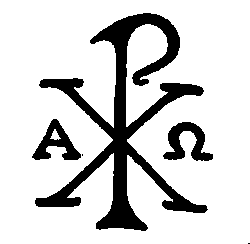Gospel for Today – Presentation of the Lord
FEAST OF THE PRESENTATION OF THE LORD (A)
We are very blessed this year that Feb. 2 falls on a Sunday. Most years the Feast of the Presentation of the Lord passes without much notice, because it is not a holy day of obligation and so consequently most Catholics are not aware of its occurrence. But when it falls on a Sunday, it supersedes the Sunday celebration and we get to experience some things that are a bit out of the ordinary. For example, the priest has the option of starting Mass outside of the church with a special blessing of candles.
This sort of unique custom is a reminder of just how rich Catholicism truly is. Ours is a faith that is 2000 years old and it has roots that go back thousands of years before that in the Jewish religion. It is not surprising that we have many ancient traditions. This is a part of our heritage as Catholics. This is a part of the rich tapestry of the Catholic faith. And what is most fascinating about these traditions is that one only has to peel back a layer to glimpse the profound and beautiful truth that is expressed in these practices.
Today’s feast commemorates the presentation of the Lord in the Temple by Mary and Joseph, forty days after His birth, in accordance with the Mosaic law. From the gospel reading today: “When the days were completed for their purification according to the law of Moses, Mary and Joseph took Jesus up to Jerusalem to present Him to the Lord, just as it is written in the law of the Lord, Every male that opens the womb shall be consecrated to the Lord…” (Lk 2:22).
The ancient Jewish people considered a mother who had given birth to a male child to be unclean and so Mary is at the Temple to undergo ritual purification. This involved making a sacrifice for sin and being prayed for by a priest. For this reason this feast day has been called in the past the Purification of the Blessed Virgin. In the East it was celebrated with a penitential emphasis, recalling this sacrifice in reparation for sin.
The Armenian Catholics called the feast “The Coming of the Son of God into the Temple,” highlighting the fact that this is the first time the Son of God enters into the House of God. In the Western Church a different tradition has developed around the feast. The custom arose of blessing candles on this day, and so the feast became known by the popular name of “Candlemas.”
Why the association with candles? Christ is called the light of the nations, and in the pre-electric era, candles were the primary source of light for most people. Candles are also used on the altar at Mass, as well as in private devotional prayers, as a type of sacrifice. Christ, of course, is the ultimate sacrifice. He is the lamb of God, who takes away the sins of the world. His all-sufficient sacrifice is precisely why we no longer are called to make animal sacrifices in reparation for our sins.
But we are still called, as a people of God, to make sacrifices. For one, we are called to be Christ-like, and Christ sacrificed Himself for us. And so we, too, are called to sacrifice ourselves for the good of others – sacrificing our time and talent, and if need be sacrificing our lives for our neighbors, or our faith. We are also called to make sacrifices as reparation for our personal sins, to both demonstrate to God our contrition and also so that we may identify more perfectly with Christ’s sacrifice for us. This is why the priest assigns us a penance in the confessional, and why as we approach the Lenten season we will begin to think about what we will be “giving up” as a Lenten sacrifice.
Lighting candles has been seen as a form of minor sacrifice offered in prayer. Candles represent an act of human labor – the work of our hands. In pre-industrial days someone had to make the candle by hand. The bees had to be cultivated and cared for. The beeswax had to be collected, and then molded into the proper form. If you did not make the candle yourself, you paid money to the one who did, and that money represented a sacrifice of your time and energy. Either way, to burn the candle, to watch it disappear, is a small sacrifice of time and talent to God. As the smoke from the candle wafts up into the sky, it symbolizes our prayers being lifted up to heaven. And the light from the burning flame represents the light of Christ come into the world.
This is why candles have always been used in prayer. It was not just so the near-sighted monk could read his breviary in the darkened cell. The very act of lighting a candle and allowing it to burn is a form of prayer and sacrifice. Burning candles are just one small element of the rich tapestry of Catholic tradition. The candle may inspire our eyes, but we also have incense to inspire our nose (the smoke from the incense rising to heaven is a form of prayer just like the smoke from a burning candle). To inspire our ears there is the chant.
As the candles are being lit the faithful would hear this chant proclaimed. Ecce Dominus noster cum virtute veniet, ut illuminet oculos servorum suorum, alleluia. “Behold, our Lord will come with power to enlighten the eyes of His servants, alleluia.”
As the faithful proceed with their lighted candles into the church to begin Mass, they sing Lumen ad revelationem gentium, et gloriam plebis tuae Israel. “A light for revelation to the Gentiles and for glory of your people Israel.”
And as Mass finally begins, they hear “Your merciful love, O God, we have received in the midst of your temple. Your praise, O God, like your name, reaches the ends of the earth; your right hand is filled with saving justice.”
These chants and antiphons inspire us and teach us about the faith. The entrance chant for the Mass has us right there in the Temple in Jerusalem with the Christ-child. We imagine ourselves in the gospel reading, in the Temple, watching and praying as Mary presents Jesus to the Lord and is ritually cleansed, as Simeon holds high the Son of God and offers praise to the Father. Then from the Temple we go out and bring the good news of Christ to “the ends of the earth.” We become evangelizers. We proclaim His name and His praise to all peoples, as we remember the lessons of Epiphany. Christ is truly a “light of revelation to the Gentiles” and we must do our part to cast that light to all corners of the earth – even the one called Cullowhee!
All of this is only how Mass begins. This is what I mean when I say that every tiny aspect of our Catholic heritage is filled with layer upon layer of meaning. The candles, the incense, the music, the rituals and customs are all part of what makes our faith so solid and real. God made us as beings with both a material body and a spiritual soul. He communicates to us both through the senses of our bodies as well as in the inner chamber of our spirit. It is only right, therefore, that we involve both body and spirit when we worship Him. The rituals of the Catholic Church inspire our senses precisely to help us do that.
This is one of the lessons we can take home from today’s liturgy – that there is a lesson hidden in every aspect of our faith, every lighting of a candle, every psalm that is sung, every time we bend a knee. This is a lesson we can incorporate into our lives as Catholic Christians.
For those of you attending Mass tonight at WCU (or this morning at St. Mary’s), you are invited to bring any candles you may want to use in your personal devotional prayers to be blessed by Father Voitus before Mass. And let us remember each time we light a candle, to offer a silent prayer of praise to the One who is the light of the world.
—

WCU Catholic Campus Ministry
Matthew Newsome, MTh, campus minister
(828)293-9374 | POB 2766, Cullowhee NC 28723
